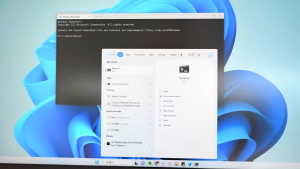Stepping into the world of smart home technology doesn’t require emptying your bank account. The best budget smart home devices for beginners combine affordability with impressive functionality, making home automation accessible to everyone.
Whether you’re looking to control your lights with voice commands, enhance your home security, or simply add convenience to your daily routine, there’s never been a better time to start. Today’s affordable smart home devices offer features that were once reserved for expensive systems, and they’re easier to set up than ever before.
In this comprehensive guide, I’ll walk you through the most reliable and budget-friendly smart home devices perfect for beginners. You’ll discover which products deliver the best value, how to choose devices that work together seamlessly, and practical tips for building your smart home ecosystem without breaking the bank.
Why Start With Budget Smart Home Devices?
Starting small with affordable smart home technology makes perfect sense for beginners. You can test the waters without significant financial commitment, learn how different devices work together, and gradually expand your setup based on real experience.
Budget devices have improved dramatically in recent years. Many affordable options now include features like voice control, app integration, and automation capabilities that rival premium products. Plus, starting with entry-level devices helps you understand which smart home features you’ll actually use before investing in more expensive alternatives.
The beauty of beginning with budget-friendly options is that you can experiment with different brands and ecosystems. This hands-on experience proves invaluable when you’re ready to expand your smart home setup.
Essential Smart Home Devices Every Beginner Should Consider
Smart Plugs: Your Gateway to Home Automation
Smart plugs represent the easiest and most affordable entry point into home automation. These ingenious devices transform any regular appliance into a smart one by simply plugging into your existing outlets.
Why smart plugs are perfect for beginners:
- Incredibly simple setup process (usually under 5 minutes)
- No electrical knowledge required
- Works with lamps, fans, coffee makers, and more
- Enables scheduling and remote control
- Typically costs between $10-$25
Popular budget options include the Kasa Smart Plug Mini and Gosund Smart Plug. Both offer reliable performance, voice assistant compatibility, and energy monitoring features. You can schedule your coffee maker to start brewing before you wake up or turn off forgotten devices remotely.
Smart Light Bulbs: Instant Ambiance Control
Smart lighting transforms your home’s atmosphere while reducing energy costs. Budget smart bulbs now offer color-changing capabilities, dimming options, and scheduling features at surprisingly low prices.
Key benefits of smart lighting for beginners:
- Creates custom lighting scenes for different moods
- Reduces electricity bills through scheduling
- Enhances home security with automated patterns
- No hub required for many affordable options
- Individual bulbs available for $10-$20
The Wyze Bulb Color and Sengled Smart Bulbs deliver excellent value. They connect directly to your Wi-Fi network, eliminating the need for additional hardware. You can adjust brightness, change colors, and create schedules all from your smartphone.
Smart Speakers: Your Voice Control Hub
A smart speaker serves as the command center for your connected home. These devices enable hands-free control of compatible smart home products through simple voice commands.
What makes smart speakers essential:
- Controls multiple devices with voice commands
- Provides music streaming and entertainment
- Answers questions and sets timers
- Creates routines and automation
- Budget options start around $25-$50
The Amazon Echo Dot and Google Nest Mini represent the best value in this category. Both offer impressive sound quality for their size, extensive smart home compatibility, and frequent sales that bring prices even lower.
Budget-Friendly Security Devices for Peace of Mind
Smart Video Doorbells
Seeing who’s at your door from anywhere provides incredible peace of mind. Budget smart video doorbells now include motion detection, two-way audio, and cloud storage options.
Affordable models like the Wyze Video Doorbell and Ring Video Doorbell (Wired) offer 1080p HD video, night vision, and smartphone notifications. These devices typically range from $40-$80 and work with existing doorbell wiring, making installation straightforward for most homes.
Indoor Security Cameras
Monitoring your home’s interior becomes effortless with affordable smart cameras. Modern budget options include features previously found only in expensive systems.
Essential camera features to look for:
- Clear 1080p video quality
- Motion and sound detection
- Night vision capability
- Two-way audio communication
- Free cloud storage options
The Wyze Cam v3 and Blink Mini Indoor Camera deliver outstanding value at under $30. Both provide reliable monitoring with smartphone alerts, making them perfect for checking on pets, kids, or home security while you’re away.
Smart Home Compatibility: Choosing the Right Ecosystem
Understanding smart home ecosystems prevents compatibility headaches down the road. The three major platforms—Amazon Alexa, Google Home, and Apple HomeKit—each offer unique advantages.
Amazon Alexa ecosystem:
- Widest device compatibility
- Extensive third-party support
- Best for budget-conscious shoppers
- User-friendly app interface
Google Home ecosystem:
- Superior voice recognition
- Excellent integration with Google services
- Growing device selection
- Intuitive home controls
Apple HomeKit ecosystem:
- Strong privacy protections
- Seamless iPhone/iPad integration
- More expensive device options
- Secure home automation
Most beginners find success starting with either Amazon Alexa or Google Home due to wider device availability and better budget options. Choose based on which voice assistant you prefer and which smartphones you already own.
Setting Up Your First Smart Home Devices
Getting started with smart home technology is simpler than you might think. Here’s a straightforward approach that ensures success:
Step 1: Choose your smart speaker first. This becomes your control hub and determines your ecosystem. Set it up and familiarize yourself with basic voice commands.
Step 2: Add smart plugs next. These require minimal setup and provide instant gratification by making existing devices smart-controllable.
Step 3: Install smart lighting. Replace frequently-used lights first to experience immediate benefits and convenience.
Step 4: Enhance security gradually. Add a video doorbell or camera once you’re comfortable with basic devices.
Step 5: Create simple automations. Start with basic routines like “Good Morning” or “Bedtime” that control multiple devices simultaneously.
Most smart home apps guide you through setup with clear instructions. Take your time, follow each step carefully, and don’t hesitate to restart if something doesn’t work initially.
Money-Saving Tips for Building Your Smart Home
Expanding your smart home affordably requires strategy and patience. These practical tips help you maximize value while minimizing costs:
Watch for seasonal sales. Black Friday, Prime Day, and other major shopping events often feature deep discounts on smart home devices.
Buy multi-packs when possible. Smart plugs and bulbs sold in bundles typically cost less per unit than individual purchases.
Prioritize needs over wants. Focus on devices that solve actual problems or improve daily routines rather than buying gadgets for novelty.
Check for refurbished options. Manufacturer-refurbished devices often work like new at significant discounts with full warranties.
Start with one room. Completely automating a single space proves more satisfying than half-automating your entire home.
Common Beginner Mistakes to Avoid
Learning from others’ experiences saves time, money, and frustration. Here are pitfalls that smart home beginners often encounter:
Mixing incompatible ecosystems. Buying devices that don’t work together creates unnecessary complications. Stick with one primary ecosystem initially.
Ignoring Wi-Fi requirements. Smart devices rely on stable internet connections. Weak Wi-Fi signals cause frustrating performance issues.
Skipping security updates. Keeping device firmware current protects against vulnerabilities and ensures optimal performance.
Overcomplicating automation. Start with simple routines before creating complex multi-device automations.
Neglecting privacy settings. Review app permissions and security options for each device you install.
Expanding Your Smart Home Over Time
Once you’ve mastered basic devices, strategic expansion brings additional convenience and functionality. Consider these next-level budget options:
Smart thermostats like the Wyze Thermostat offer energy savings and climate control for around $60-$80. They typically pay for themselves through reduced utility bills.
Smart locks provide keyless entry and remote access control. Budget-friendly options from brands like Wyze and August start around $80-$100.
Smart sensors detect motion, door/window openings, temperature, and more. These enable advanced automation and cost $15-$30 each.
Smart displays combine smart speaker functionality with visual interfaces, perfect for recipes, video calls, and security camera feeds.
Build your system gradually, ensuring each new device integrates smoothly before adding more complexity.
Conclusion
Starting your smart home journey with the best budget smart home devices for beginners opens up a world of convenience, security, and efficiency without requiring a massive investment. The affordable options available today offer impressive functionality that makes home automation accessible to everyone.
Begin with essential devices like smart plugs, bulbs, and a smart speaker to establish your foundation. These core products provide immediate benefits while helping you understand how smart home technology fits into your lifestyle. As you grow comfortable with basic automation, you can gradually expand with security cameras, smart locks, and other specialized devices.
Remember that the most successful smart homes are built gradually and intentionally. Focus on solving real problems and enhancing daily routines rather than buying devices simply because they’re “smart.” With patience and smart shopping strategies, you’ll create a connected home that genuinely improves your quality of life without breaking your budget.
Frequently Asked Questions
Q: Do I need a smart home hub for budget devices?
A: Most modern budget smart home devices connect directly to your Wi-Fi network and don’t require a separate hub. Smart speakers like Echo or Google Home can serve as control centers without additional hardware.
Q: Will budget smart home devices work with my older router?
A: Most budget devices work fine with routers from the past 5-7 years. Ensure your router supports 2.4GHz Wi-Fi, as many affordable smart devices don’t support 5GHz networks.
Q: How much money should I budget to start?
A: You can create a functional smart home starter setup for $100-$150, including a smart speaker, a few smart plugs, and a couple of smart bulbs. This provides enough devices to experience meaningful benefits.
Q: Are budget smart home devices secure?
A: Reputable budget brands like Wyze, TP-Link Kasa, and Amazon/Google products maintain good security standards. Always update firmware, use strong passwords, and enable two-factor authentication when available.
Q: Can I control budget smart devices when I’m away from home?
A: Yes! Most smart home devices work remotely through their smartphone apps as long as you have internet access both at home and on your mobile device.
Read More: How New Car Safety Technology Is Changing the Driving Experience








